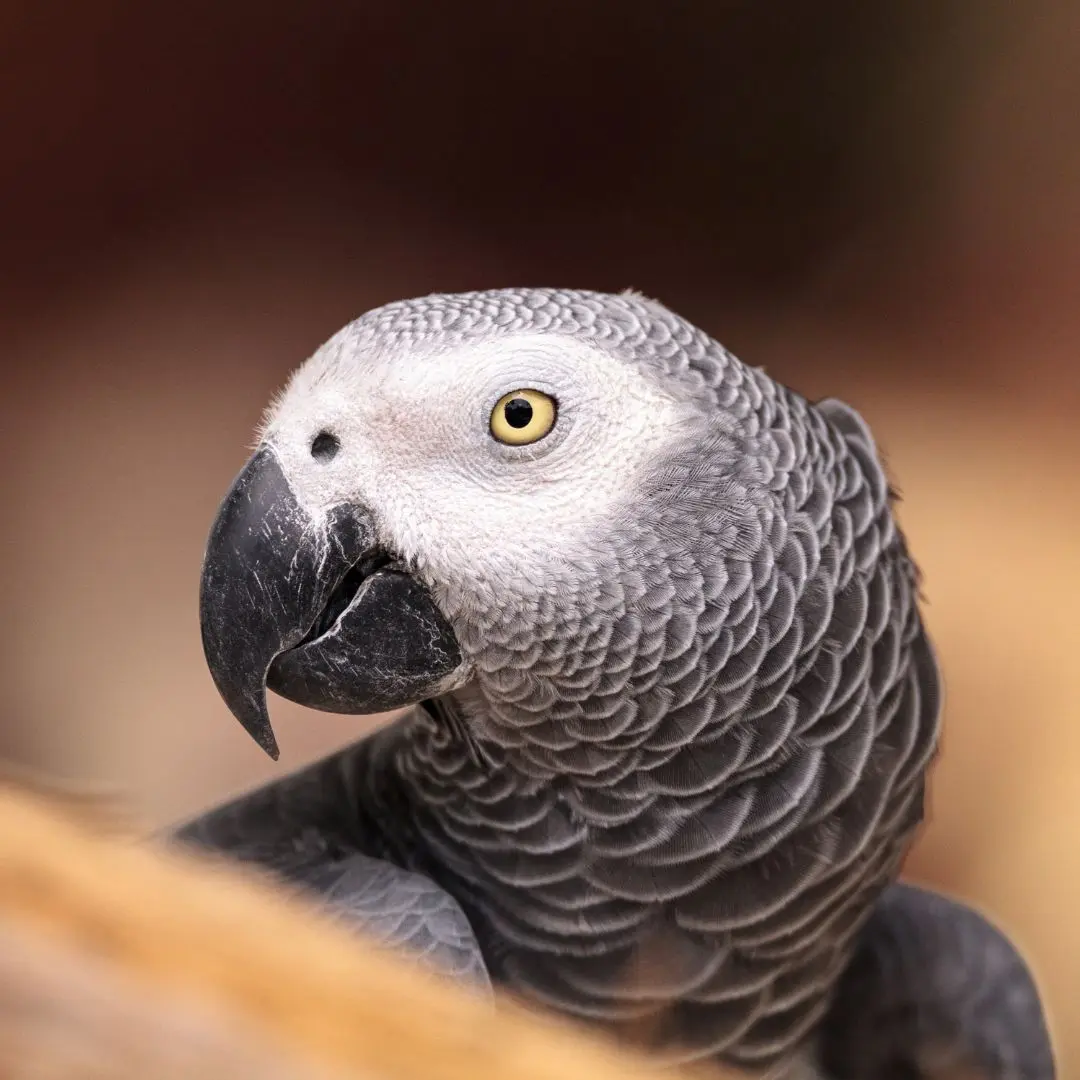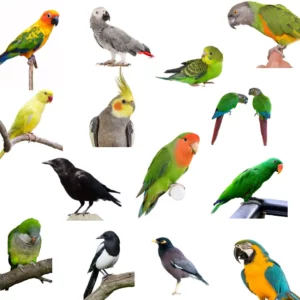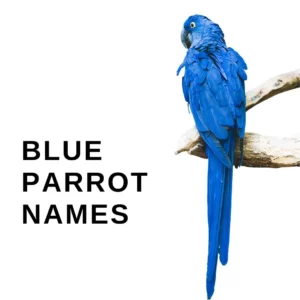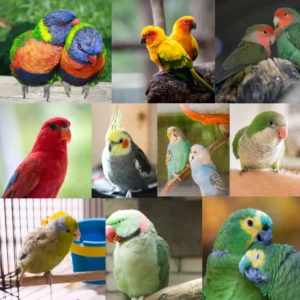The African Grey Parrot is a fascinating and intelligent bird native to the dense forests of West and Central Africa. Known for its impressive vocabulary and ability to mimic human speech, this parrot species has captured the hearts of bird enthusiasts worldwide.
African Grey
Species Overview
There are two main subspecies of African Grey Parrots:
- Congo African Grey
- Timneh African Grey.
The Congo African Grey is larger and has bright red tail feathers, while the Timneh African Grey is smaller and has a darker, maroon-colored tail. Both subspecies share similar traits and behaviors.
The Congo African Grey Parrot, scientifically known as Psittacus erithacus erithacus, is native to the rainforests of West and Central Africa. It is highly sought after for its exceptional talking abilities and intelligence.
On the other hand, the Timneh African Grey Parrot, scientifically known as Psittacus erithacus timneh, is found in the forests of Guinea, Sierra Leone, and Liberia. Although smaller, it is equally renowned for its remarkable mimicry skills and charming personality.
These parrots are highly social creatures often found in flocks, ranging from a few individuals to hundreds. They communicate with each other using a variety of calls, squawks, and whistles, which helps them establish their territory and maintain social bonds within the group.
Physical Characteristics
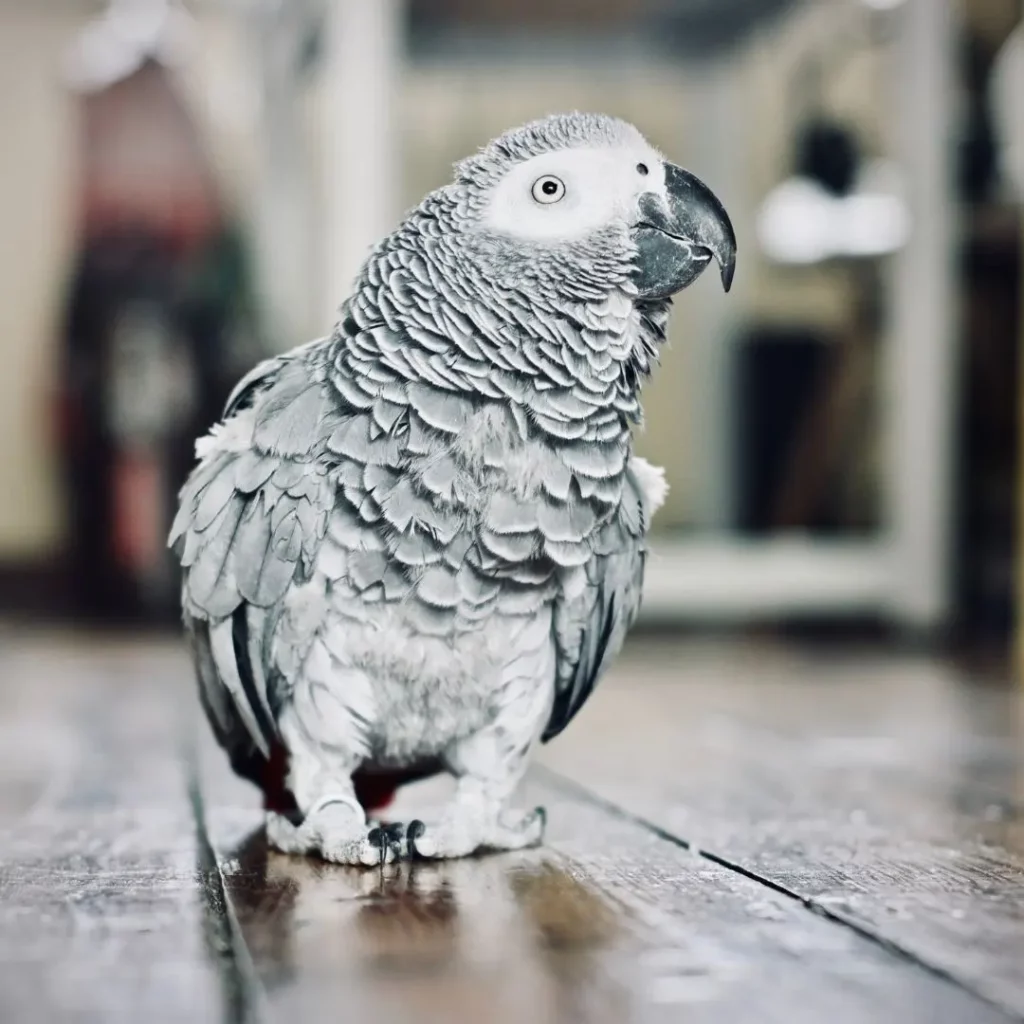
The African Grey Parrot is a medium-sized bird, typically measuring 12 and 14 inches long. Its plumage is predominantly gray, with a distinctive white mask around its eyes and a vibrant red tail.
The feathers on its wings are darker, creating a striking contrast against the lighter body color. This coloration helps the parrot blend in with the tree canopy, providing camouflage and protection from predators.
Besides their captivating appearance, African Grey Parrots have remarkable physical adaptations.
They have strong beaks designed for cracking nuts and seeds, their primary source of nutrition. These beaks can exert tremendous force, allowing them to access the hard outer shells of various fruits and nuts in their natural habitat.
African Grey Parrots have zygodactyl feet, meaning they have two toes pointing forward and two toes pointing backward. This unique foot structure enables them to precisely manipulate objects, making them excellent climbers and manipulators of their environment.
Lifespan and Growth
African Grey Parrots have an impressive lifespan, often living well into their 50s or 60s with proper care. In some cases, they have even been known to live beyond 80 years. This longevity is attributed to their intelligence, adaptability, and the strong bond they form with their human companions.
These parrots reach sexual maturity at around 4 to 6 years of age. During this time, they undergo significant physical and behavioral changes.
Their plumage becomes more vibrant, and their ability to mimic sounds improves.
African Grey Parrots have a relatively slow growth rate compared to other parrot species, requiring a nutritious diet and a stimulating environment to support their growth and overall well-being.
Proper care and attention are crucial for the healthy development of African Grey Parrots. They thrive in environments that offer mental stimulation, social interaction, and opportunities for physical exercise.
Regular veterinary check-ups, a balanced diet, and a safe living space are essential for ensuring their long and fulfilling lives.
Behavior, Intelligence, and Personality of African Grey Parrots
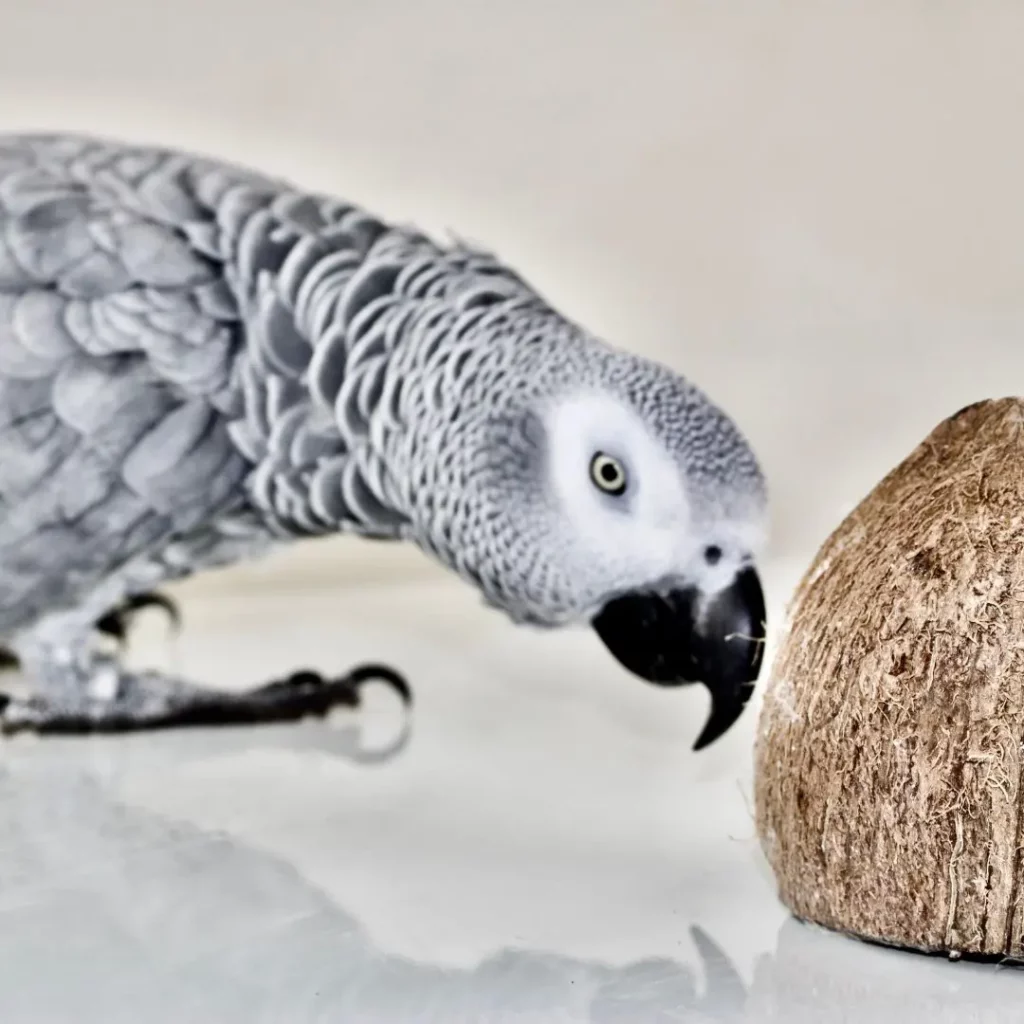
African Grey Parrots are renowned for their high intelligence and exceptional communication skills.
They have remarkable cognitive abilities, including problem-solving, understanding, and using human language. With proper training and socialization, they can develop an extensive vocabulary and engage in meaningful conversations with their human companions.
Social Behavior
These highly social parrots thrive on social interaction with humans and other flock members. They form strong bonds with their owners and require regular mental stimulation to prevent boredom and potential behavioral problems.
Their social nature makes them prone to separation anxiety if left alone for extended periods, so it’s important to provide them with plenty of companionship.
Common Behavioral Issues
Some African Grey Parrots may develop behavioral issues due to a lack of mental stimulation or improper training. Feather plucking, excessive screaming, and aggression are common issues observed in these birds.
Providing them with engaging toys, regular training sessions, and a consistent routine can help address and prevent these behavioral problems.
African Grey Parrot Habitat
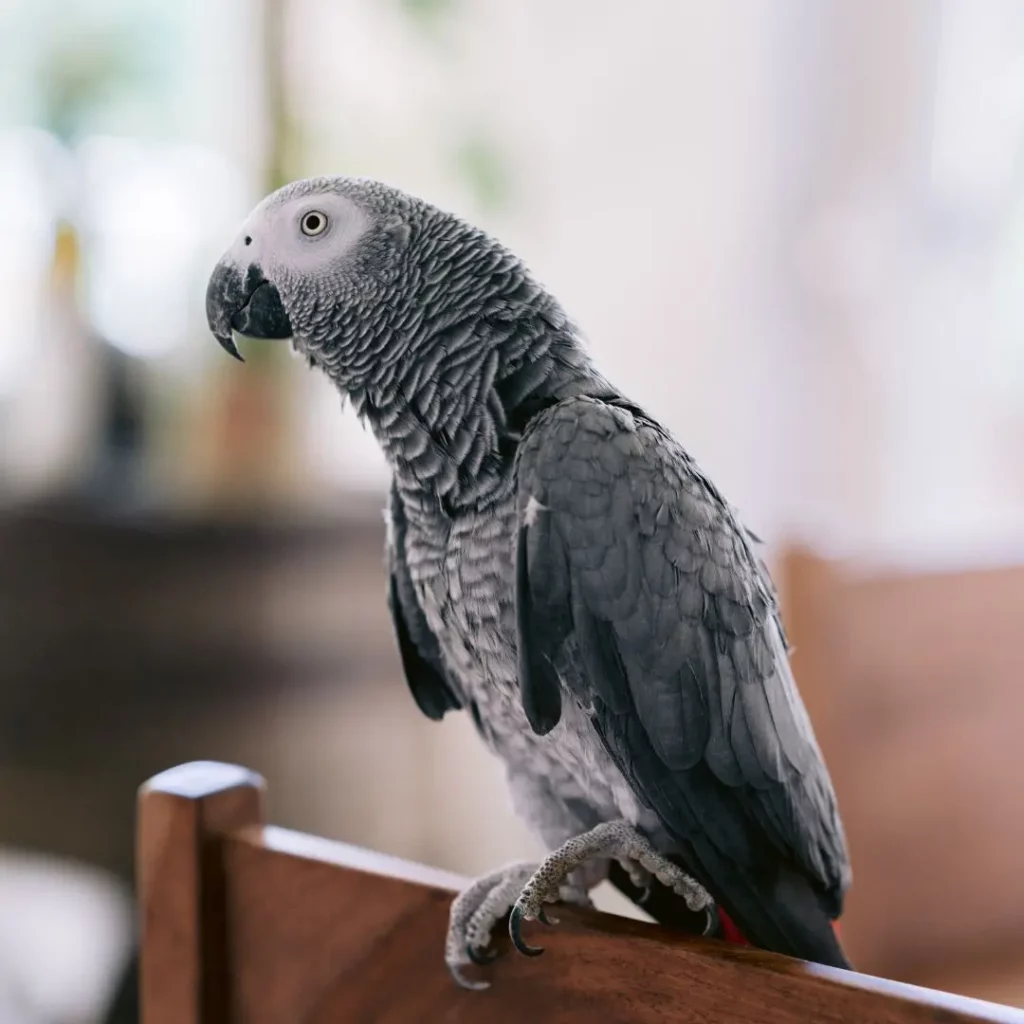
Creating an ideal home environment for an African Grey Parrot involves providing a spacious cage or aviary with dimensions that allow for adequate wing-flapping and climbing.
The cage should contain various perches, toys, and mentally stimulating activities to entertain the parrot. Exposing the parrot to natural daylight and fresh air also benefits its overall health.
Diet and Nutrition
African Grey Parrots eat fruits, nuts, seeds, and leafy vegetation in their natural habitat. They have strong beaks that help them crack open nuts and seeds, allowing them to access their nutritious contents. They also rely on their keen sense of sight and smell to find food sources in the dense foliage of the rainforest.
In captivity, it’s essential to replicate the diverse diet of African Grey Parrots to ensure their optimal health. A well-balanced diet should include high-quality pellets, fresh fruits, vegetables, and occasional nuts as treats. It’s important to avoid feeding them foods toxic to birds, such as chocolate, caffeine, and avocado.
Common Health Issues
African Grey Parrots are generally hardy birds but susceptible to respiratory infections, feather plucking, and vitamin deficiencies.
Regular care and veterinary check-ups are essential to ensure your African Grey Parrot’s overall well-being.
This includes routine health examinations, grooming, and monitoring their diet to maintain optimal nutrition. Maintaining a clean and stimulating environment also plays a vital role in promoting the parrot’s physical and mental well-being.
Is African Grey parrot a good pet?
Whether an African Grey parrot is a good pet for you depends on several factors, including your lifestyle, experience, and commitment. Here’s a breakdown to help you decide:
Pros:
- Highly intelligent and social: African Greys are known for their exceptional intelligence and ability to form deep bonds with their humans. They thrive on interaction and can learn impressive tricks, even mimicking speech and sounds.
- Long lifespan: With proper care, African Greys can live for 50-70 years, making them a long-term companion.
- Beautiful and captivating: Their elegant grey plumage, expressive eyes, and playful personalities make them a joy to be around.
Cons:
- Demanding care: African Greys require a lot of time and attention. They need daily interaction, mental stimulation, and spacious enclosures. Neglecting these needs can lead to behavioral problems and emotional distress.
- Loud and vocal: They are naturally vocal birds with a wide range of calls and squawks. This can be charming, but it might not be suitable for everyone, especially those living in apartments or with noise restrictions.
- Strong personalities: African Greys can be independent and assertive. They require experienced owners who can understand their needs and provide consistent training and discipline.
- High cost: Owning an African Grey is a significant financial commitment. Their initial purchase price, specialized diet, large enclosures, and potential veterinary care can be expensive.
Before getting an African Grey, consider these questions:
- Do you have the time and energy to devote to a demanding pet?
- Can you provide a safe and spacious enclosure with plenty of enrichment?
- Are you comfortable with loud vocalizations?
- Do you have experience with parrots or other intelligent birds?
- Are you financially prepared for the long-term costs of ownership?
If you answered yes to these questions, an African Grey could potentially be a wonderful addition to your life. However, it’s crucial to research extensively, talk to experienced owners, and ensure you can provide the specific care this intelligent bird requires. Remember, a pet is a lifelong commitment, so choose wisely!
Do African greys talk?
Yes, African Grey parrots are renowned for their impressive talking abilities! They are often considered the best mimic birds in the world, capable of:
- Mimicking human speech with remarkable accuracy and clarity. Their vocabulary can range from single words and phrases to complex sentences.
- Learning and reproducing a wide range of sounds, including other birds, animals, household noises, and even music.
- Understanding the context of their vocalizations. They can use words and phrases appropriately in different situations, suggesting some level of comprehension.
However, it’s important to note that not all African Greys will talk, and some may be more vocal than others. Several factors can influence their talking abilities:
- Individual differences: Like humans, each parrot has its own personality and learning style. Some may be naturally more inclined to mimic sounds than others.
- Exposure: The more they hear and interact with humans talking, the more likely they are to pick up words and phrases.
- Training and positive reinforcement: Providing consistent training and rewarding desired vocalizations can encourage talking behavior.
- Age: Young African Greys are generally more receptive to learning new sounds than older birds.
Even if your African Grey doesn’t become a master conversationalist, their vocal repertoire will still be impressive and entertaining. They can be incredibly expressive birds with a variety of squawks, whistles, and other sounds that convey their emotions and needs.
My Senior Paws is a participant in the Amazon Services LLC Associates Program, an affiliate advertising program designed to provide a means for sites to earn advertising fees by advertising and linking to Amazon.com. We also participate in other affiliate programs which compensate us for referring traffic.
